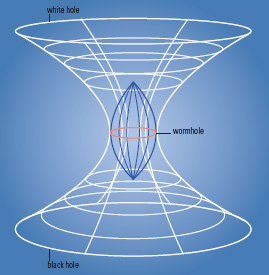String Theory: Difference between revisions
| Line 51: | Line 51: | ||
[[https://i.pinimg.com/originals/d1/32/81/d13281b5f8eb4451b00c14afb1c5989a.png]] | [[https://i.pinimg.com/originals/d1/32/81/d13281b5f8eb4451b00c14afb1c5989a.png]] | ||
[[https://www.researchgate.net/profile/Rakshit-Vyas/publication/336312387/figure/fig1/AS:811362716483586@1570455354384/Glimpses-of-String-theory-Courtesy-Shutterstockcom.png]] | [[https://www.researchgate.net/profile/Rakshit-Vyas/publication/336312387/figure/fig1/AS:811362716483586@1570455354384/Glimpses-of-String-theory-Courtesy-Shutterstockcom.png]] | ||
Revision as of 23:20, 24 April 2022
Claimed by Julie Heil Spring 2022
Introduction to String Theory
String theory is a theoretical framework to address the shortcomings of Einstein's theory of general relativity and quantum physics - two primary tools for understanding modern physics. String theory is often referred to as the theory of everything - a just identification given its ability to bridge the gap between gravity and quantum physics. The theory of general relativity and quantum mechanics are the primary, established explanations for how the universe works on a macroscopic and microscopic scale, respectively. However, these two physical explanations address different ends of the spectrum of matter in terms of relativistic effects, fundamental forces, and physical properties. String theory provides explanations where modern physics fails. These fields of interest include the early universe, black holes, and atomic nuclei. To understand the purpose of the theory of everything, it is vital to have a sound understanding of general relativity's purpose and the role of relativistic quantum mechanics - that is, in terms of gravitational effects on the matter, the fundamental physics of the universe. General relativity serves an essential purpose in determining the gravitational effects on planetary-sized objects and observable particles. However, the "gap" in Einstein's theory lies within its inability to address gravity's impact on elementary particles. General relativity successfully explains macro-scaled particles, given its ability to incorporate gravitational effects in its theoretical and mathematical foundation. However, the same cannot be said for elementary particles. Accordingly, these elementary particles require relativistic quantum mechanics to explain their physical properties, assuming that gravity's effect on this scale is negligible. This is the disconnect between modern physics' primary schools of thought. As a result, the purpose of the string theory is realized in its ability to successfully incorporate gravitational effects, independent of the scale of particles. Thus, the theory of everything emerged.
See reference 3.
String theory is a theory that utilizes and brings together electromagnetism, the weak force, gravity, and the strong forces. These are the four fundamental forces of nature. The particles that are identified within the string theory all have a particular vibration pattern of a 1D object, a string. String theory falls under the category of quantum theory and is an example of (the quantum) theory of gravity. String theory is highly constrained due to it being confined by the parameters of 1D, that parameter being the string length. While string theory is far from being complete, efforts from modern research in string theory have to advance our current understanding of other related fields of study like black hole physics, algebraic geometry, cosmology, and condensed matter physics.
See reference 5.
Relevant Mathematical Equations (Bekenstein-Hawking Formula)
- [math]\displaystyle{ S= \frac{c^3kA}{4\hbar G} }[/math]
The Bekenstein-Hawking formula for the entropy of a black hole, shown above, provides a theoretical value for the entropy of a black hole. While this equation provides an expected value that correlates to the entropy of a black hole, according to macroscopic features resulting from its microstates, the formula lacks a derivation for a black hole's entropy-based on counting microstates on a quantum scale with consideration of gravitational aspects. In 1996, Andrew Strominger and Cumrun Vafa provided a derivation for a black hole's entropy with respect to the number of microstates of a black hole and in terms of the string theory. The results obtained from these calculations provided solutions matching Berkenstein and Hawking's original formula. Thus, string theory was validated as a mode of quantum gravity.
See reference 1.
Theoretical Foundation
String theory is founded on the basis that elementary particles are components of microscopically small strings - to the degree that technology is not available to visualize. A valid and common depiction of strings lined with elementary particles is a visualization of these identical particles laying on a violin string. String theory advocates propose that elementary particles are believed to be in "excited" states due to vibrations in these strings. This is significant given the bending of spacetime and the existence of black holes and wormholes - solutions to Einstein's equations that are not explained entirely by quantum physics or general relativity in their own right. On a theoretical basis, string theory provides solutions based on gravity acting on elementary particles (theories of quantum gravity), a unification of quantum mechanics, and Einstein's theory of general relativity.
See reference 2. Oscillations of the closed string.
History of String Theory
Potential Discoveries and Applications
Wormholes
The potential usage of string theory is to provide the quantum gravitational solutions that Einstein's theory of general relativity fails to recognize at the center of black holes or wormholes. This inability is due to its lack of consideration of quantum forces alongside gravity. String theory is integral to discovering wormholes' (derived solutions to Einstein's equations) level of stability. Specifically, string theory's quantum forces and gravity enables the determination of the radiative effects and stability of this unexplained astrophysical phenomenon. In conclusion, these recently gained understandings of string theory may ultimately yield answers to questions such as...
1. Given Kerr wormholes and their potential to connect distant points in the universe, is it theoretically feasible to use these solutions to travel vast lengths through the universe?
See reference 2.
Computational Models
[[1]]
[[2]]
[[3]]
[[4]] string theory
Examples
[[5]]
Connectedness
- How is this topic connected to something that you are interested in?
String Theory is a particularly intriguing topic due to far-reaching applications that today are widely considered science fiction. (i.e., interstellar space travel utilizing wormholes). This topic is something that not only makes you think but still has the scientific world asking questions. A general understanding of the basics yields a profound knowledge of how the physical world operates
- How is it connected to your major?
String theory falls into the category of Physics, Astrophysics, and Theoretical Physics. My major is Physics with a concentration in Astrophysics, and it mends nicely into my career path.
- Is there an interesting industrial application?
Scientists may not realize industrial applications for string theory in the near future. Still, in the long run, an understanding of string theory could have a profound, yet unforeseen, impact on the world - in a similar revolutionary and unpredicted manner as that of quantum mechanics and the development of modern communication and flow of information.
Scientific Development Timeline
1968-1974: Dual resonance model
1970: String theory is proposed to understand the quantum mechanics of oscillating strings.
1976: Supergravity is proposed as a means of explaining the interdependence of gravity and sub-atomic particles' spectrum of excitations - an integral component in string theory.
1974-1984: Bosonic string theory & superstring theory
1980: Initially perceived to discredit string theory as a unification of quantum mechanics, classical physics, and particle physics, the inconsistencies of the theory were found to nullify each other when considered as special cases. This is the year that string theory becomes widely accepted as a potentially unifying explanation in the scientific community of the time.
1984-1994: 1st superstring revolution
1991-1995: String theory exploration, in terms of black holes, results in development towards the understanding of the different forms of string theory, in terms of their relationship.
1994-2003: 2nd supervising revolution
1996: String theory provides a microscopic understanding of black hole entropy and the nature of black hole quantum physics.
See reference 3 & 4.
See reference 4 for in-depth explanation.
Additional Resources
Further wiki reading
Elementary Particles and Particle Physics Theory
External links
Articles
String theory beyond the Planck scale
String theory and noncommutative geometry
String Theory, University of Cambridge Part III Mathematical Tripos
Videos
Brian Greene: Making Sense of String Theory (YouTube)
String Theory Explained – What is The True Nature of Reality?
ScienceClic English: String Theory
String Theory and the End of Space and Time with Robbert Dijkgraaf
Books
Steven Gubser, The Little Book of String Theory
P. Di Francesco, P. Mathieu and D. S´en´echal, Conformal Field Theory
B. Zwiebach, A First Course in String Theory
M. Green, J. Schwarz and E. Witten, Superstring Theory
J. Polchinski, String Theory
References
Reference 1: "SUPERSTRINGS! Black Holes ." Web.physics.ucsb.edu. UCSB, n.d. Web. 03 Dec. 2015. <http://web.physics.ucsb.edu/~strings/superstrings/bholes.htm>.
Reference 2: Kaku, Micho, Dr. "Blackholes, Wormholes and the Tenth Dimension." Mkaku.org. N.p., n.d. Web. 03 Dec. 2015. <http://mkaku.org/home/articles/blackholes-wormholes-and-the-tenth-dimension/>.
Reference 3: Shwarz, Patricia, Dr. "The Official String Theory Web Site." Superstringtheory.com. N.p., n.d. Web. 03 Dec. 2015. <http://www.superstringtheory.com/index.html>.
Reference 4: Beibei Chen 2021 IOP Conf. Ser.: Earth Environ. Sci. 658 012002 https://iopscience.iop.org/article/10.1088/1755-1315/658/1/012002/pdf. IOP Publishing;.
Reference 5: Matt DeCross, Christopher Williams, Tejas Suresh, Satyabrata Dash, Eli Ross. String Theory. Brilliant. https://brilliant.org/wiki/string-theory/

